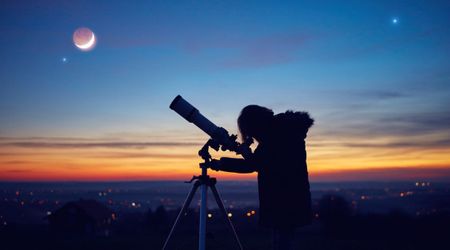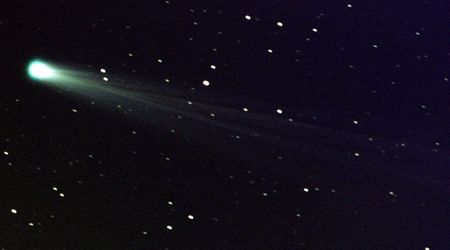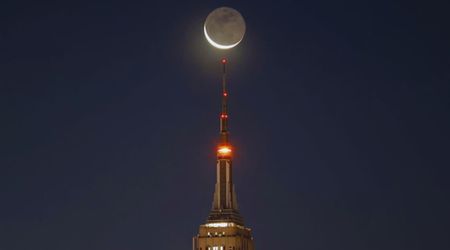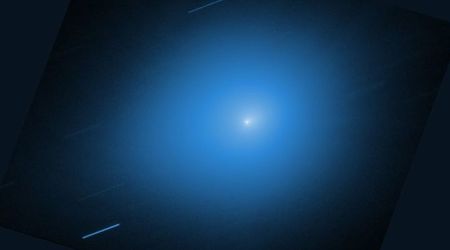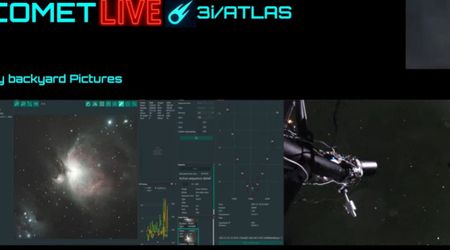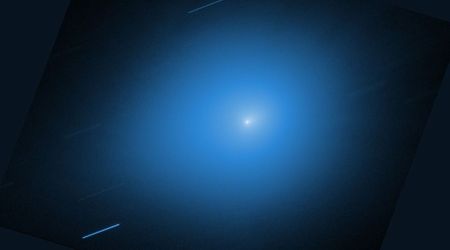The brightest stars in the night sky


When you look up into the night sky, you might have noticed that not all the stars shine equally. Few shimmer dimly while few others shine brightly enough that we can see them with our naked eye.
When we look at stars from Earth, the only way to distinguish them from planets is through their twinkling nature. Stars produce their own light, and by the time the light reaches us on Earth’s surface, it would have traveled through the various layers in the Earth’s atmosphere, which bends the light at different angles, appearing to us as “twinkling.”
The difference in brightness occurs because of their distance and the thickness of our planet’s atmosphere as well. Let’s see what the brightest stars are and how you can spot them in the night sky.
Most stars present in this list are the brightest stars in their respective constellations, so spotting the constellation, which is relatively easier than spotting individual stars, will lead you to these bright stars. The list also contains apparent magnitude, which is how bright you can expect the stars to be from Earth. This is different from absolute magnitude, which tells us how bright the stars really are without considering the effects that our atmosphere has on the light that reaches us here on Earth.
1. Sirius (Alpha Canis Majoris)
- Constellation: Canis Major
- Apparent Magnitude: -1.46
- Absolute Magnitude: +1.4
- Distance: 8.611 light-years
- Celestial Coordinates: RA 6h 45m 9s | Dec -16° 42? 58?
How to find this star: It is the brightest star in the entire sky, so it should be easy to spot. You can also spot Orion first and draw a line diagonally toward the left through Orion’s belt, which will lead to Sirius.
The best times to view it is in the summer when the skies are clear from moisture, and before sunrise, when Sirius rises from the east for viewers in the northern hemisphere.
Almost 9 light-years away from us, Sirius is the brightest star in our night sky, which is why its name, which means “sparkling” in Greek, is very apt as well.
If you have a small telescope you will discover that Sirius is in fact a binary star system made of a main-sequence star, Sirius A, and a faint white dwarf named Sirius B. Fun fact: Sirius is 24 times more luminous than the Sun!

Sirius is a binary star located in Canis Major. Image Source: Stellarium
2. Canopus (Alpha Carinae)
- Constellation: Carina
- Apparent Magnitude: -0.72
- Absolute Magnitude: -5.53
- Distance: 309.8 light-years
- Celestial Coordinates: RA 06h 23m 57.s | Dec ?52° 41? 44?
How to find this star: Although it is the second brightest star, those in the southern hemisphere have better chances of locating it. In the northern hemisphere, Canopus becomes invisible after 37 degrees latitude. Canopus is the easiest to spot if you know your way around the Winter Triangle (Sirius, Procyon, and Betelgeuse).
From Sirius, draw a straight line down toward the horizon (in the southern hemisphere, preferably) to reach Canopus. Although Canopus is a white star by chemical composition, because it is so low on the horizon, we see it redder due to atmospheric refraction.
Canopus is the second-brightest star in the night sky after Sirius. It is a rare F giant, a class that is poorly studied both because Canopus is not located in the northern hemisphere where much of the astronomical research happens, and also because F giants are very few in number.

Canopus is la white bright giant star located in Carina. Image Source: Stellarium
3. Rigil Kentaurus (Alpha Centauri)
- Constellation: Centaurus
- Apparent Magnitude: -0.27
- Absolute Magnitude: +4.34
- Distance: 4.367 light-years
- Celestial Coordinates: RA 14h 39m 36.494s | Dec ?60° 50? 02.3737?
How to find this star: Unfortunately, Alpha Centauri’s constellation, Centaurus, is also located in the southern hemisphere so the northern hemisphere’s viewers might only get to see it if they travel to the southernmost part of their areas. However, it never rises beyond 29 degrees in the north, so anyone beyond that might not be able to see it.
For those in the north, locating Southern Cross is the first step, after which they can move eastward from Delta and Beta Crucis and then from Hadar to Alpha Centauri. Those in the southern hemisphere will see Alpha Centauri as a circumpolar star, so they don’t have to worry about missing it.
Rigil Kentaurus is the brightest star of a triple star system consisting of Rigil Kentaurus (Alpha Centauri), Toliman, and Proxima Centauri. Without the aid of a telescope, we actually see two stars, Alpha Centauri and Toliman together.

Alpha Centauri is a triple star system located in Centaurus. Image Credit: Stellarium
4. Arcturus (Alpha Bootis)
- Constellation: Böötes
- Apparent Magnitude: -0.05
- Absolute Magnitude: -0.30
- Distance: 36.66 light-years
- Celestial Coordinates: RA 14h 15m 39.7s | Dec +19° 10? 56?
How to find this star: Start by spotting the Big Dipper (the question mark-like constellation). Follow the Big Dipper’s handle (the curve of that question mark) and extend it until you reach an orange, bright star. That’ll be Arcturus.
Arcturus or Alpha Böötes is derived from Greek. It means “Guardian of the Bear”. It is the brightest star in the Böötes constellation, making it the 4th brightest star in our night sky. This 7.1 billion-year-old star has completed the main sequence phase. Once Arcturus has exhausted its helium supply, its outer layers will fade away, leaving behind a white dwarf.

Arcturus is a red giant star located in Böötes. Image Source: Stellarium
5. Vega (Alpha Lyrae)
- Constellation: Lyra
- Apparent Magnitude: +0.036
- Absolute magnitude: +0.582
- Distance: 25.05 light-years
- Celestial Coordinates: RA 18h 36m 56s | Dec +38° 47? 01?
How to find this star: The fifth-brightest star is below the horizon and out of view for a little over 7 hours every day, which means it is a fairly visible star.
Vega is one of the three stars in the Summer Triangle (the other two being Altair and Deneb). From the northern hemisphere, Vega is usually seen as a blue star above the horizon — its color distinguishes it from other stars. Another method is to spot Lyra the Harp constellation and look for the brightest star in that, which is Vega.
Astronomers have studied Vega extensively, to the extent that it is now called the next most important star after our Sun!

Vega is blue-tinged white main-sequence star located in Lyra. Image Source: Stellarium
List of the 25 brightest stars as seen from Earth
The table below provides some interesting information about the 25 brightest stars in the night sky. You can download a copy of this table as a CSV file by clicking on the following link. ("File" -> "Download")
| Rank | Star Name | Visual Mag. | Dist. (ly) | RA | Dec |
|---|---|---|---|---|---|
| 1 | Sirius | -1.44 | 8.6 | 06h 45m | -16.7° |
| 2 | Canopus | -0.62 | 310 | 06h 24m | -52.7° |
| 3 | Rigil Kent. | -0.28c | 4.4 | 14h 40m | -60.8° |
| 4 | Arcturus | -0.05v | 36.7 | 14h 16m | +19.2° |
| 5 | Vega | 0.03v | 25.3 | 18h 37m | +38.8° |
| 6 | Capella | 0.08v | 42.2 | 05h 17m | +46.0° |
| 7 | Rigel | 0.18v | 770 | 05h 15m | -8.2° |
| 8 | Procyon | 0.4 | 11.4 | 07h 39m | +5.2° |
| 9 | Betelgeuse | 0.45v | 430 | 05h 55m | +7.4° |
| 10 | Achernar | 0.45v | 144 | 01h 38m | -57.2° |
| 11 | Hadar | 0.61v | 525 | 14h 04m | -60.4° |
| 12 | Altair | 0.76v | 16.8 | 19h 51m | +8.9° |
| 13 | Acrux | 0.77c | 320 | 12h 27m | -63.1° |
| 14 | Aldebaran | 0.87 | 65.1 | 04h 36m | +16.5° |
| 15 | Spica | 0.98v | 260 | 13h 25m | -11.2° |
| 16 | Antares | 1.06v | 605 | 16h 29m | -26.4° |
| 17 | Pollux | 1.16 | 33.7 | 07h 45m | +28.0° |
| 18 | Fomalhaut | 1.17 | 25.1 | 22h 58m | -29.6° |
| 19 | Deneb | 1.25v | 3200 | 20h 41m | +45.3° |
| 20 | Mimosa | 1.25v | 350 | 12h 48m | -59.7° |
| 21 | Regulus | 1.36 | 77.5 | 10h 08m | +12.0° |
| 22 | Adhara | 1.5 | 430 | 06h 59m | -29.0° |
| 23 | Castor | 1.58c | 51.5 | 07h 35m | +31.9° |
| 24 | Gacrux | 1.59v | 87.9 | 12h 31m | -57.1° |
| 25 | Shaula | 1.62v | 700 | 17h 34m | -37.1° |
